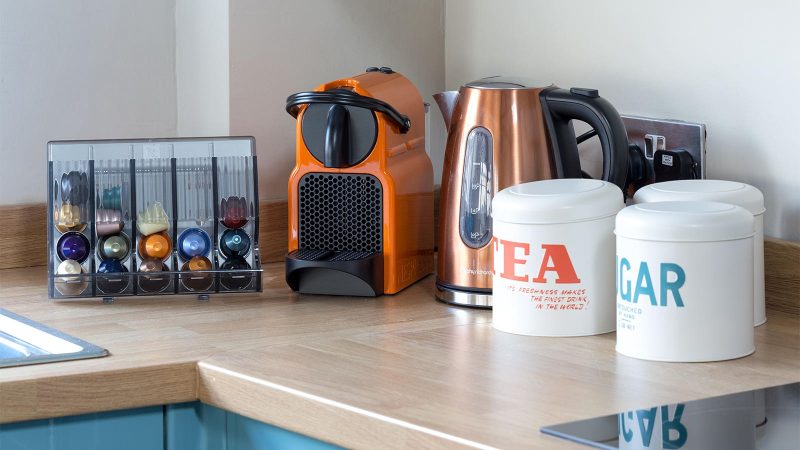Is There No High-Touch Surface in Hospitals Free of Microbial Contamination?

Swabs taken from coffeemakers in German hospital offices and break rooms, and in workers’ homes, tested positive for several important pathogens, researchers found.
“Among the eight genera of ‘medically relevant’ Gram-negative species detected, 81% were found in coffeemakers at the hospital,” according to Sarah Victoria Walker, MD, of University Hospital Cologne in Germany, and colleagues. These included Acinetobacter baumannii complex, Citrobacter freundii complex, Enterobacter cloacae complex, Escherichia coli, Pseudescherichia vulneri, Pseudomonas aeruginosa, and Klebsiella and Pantoea species.
But the investigators also found reasons not to worry greatly: most organisms were harmless and the worst appeared primarily on home machines, “perhaps indicating adherence to hygiene protocols at work and suggesting a need for hand hygiene at home.” They added that “a general ban on coffee makers doesn’t seem necessary.”
The brief report appeared in The BMJ‘s traditional Christmas edition, which features light-hearted (occasionally silly) research that the journal swears is vetted in the normal way and definitely not made up.
Given that hospitals exist to care for sick people, it’s not surprising that surfaces there are vulnerable to microbial contamination. Although these institutions always prioritize sanitation, many studies have still found that medically significant pathogens remain on handrails, tabletops, and other areas with which ungloved hands come into frequent contact. (Walker and colleagues cited this paper in the journal Infection in which Bibles were found to carry fungal and bacterial pathogens.)
As for the focus on coffeemakers, it probably goes without saying that these get handled a great deal by many people in the hospital setting, especially in light of the long shifts that many workers put in. And, as the investigators noted dryly, “hands can’t yet be eliminated without severely hampering staff.” Yet no previous studies had examined coffeemakers as a haven for pathogens.
Walker and colleagues took swabs from 25 coffeemakers, including automatic dispensers, capsule devices such as Nespresso, and barista-type espresso machines. Seventeen were located in two German hospitals and the rest in their workers’ homes. “All coffee makers had been in use for at least a year, and none was specially cleaned before sampling,” the team wrote, and no infection outbreaks were underway when swabs were taken. Five machine parts were swabbed: drip tray, buttons, outlet, water tank handle, and the tank interior. (American-style office drip coffee makers with a communal pot, such as the iconic Bunn, were apparently not present.)
A total of 360 different microbial strains were found on the hospital coffeemakers and 135 on the home machines. The vast majority were considered harmless; 30 strains from hospital machines and eight from homes were “medically relevant.” Nearly all of these were Gram-negative organisms. Only two swabs were positive for a Gram-positive pathogen, S. aureus. One was taken from the buttons of a home machine and the other came from inside the water tank in a hospital’s machine.
Overall, drip trays had the greatest counts of medically important organisms, accounting for about half of all swabs positive for these pathogens.
“The finding of medically relevant species emphasizes the necessity of following [the World Health Organization’s] Five Moments for Hand Hygiene, which considerably reduces the risk of transmission. Regular and thorough cleaning of coffee machines further diminishes the risk of nosocomial outbreaks,” Walker and colleagues concluded.
They also indicated with some pride that “the results were anticipated by all coffee machine owners, and our feedback has reportedly resulted in extensive cleaning measures. All but one of the coffee machines are still in use — although now being cleansed regularly. The owner of the other machine replaced it because of the indestructibility of the lime-based biofilm found in the study.”
Disclosures
The study had no external funding. Authors declared they had no relevant financial interests.
Primary Source
The BMJ
Source Reference: Walker SV, et al “Bug in a mug: are hospital coffee machines transmitting pathogens?” BMJ 2023; DOI: 10.1136/bmj.p2564.








